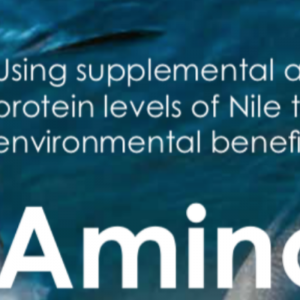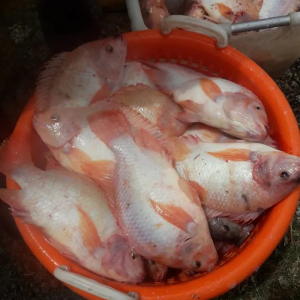
The Use of Tilapia Skin in Medicine
| Thu, 23 Jan 2020 - 09:04
The aquaculture industry is booming, it is the food industry of the future and it is not hard to see why. Being able to maximize the growth rate and select the best breeds of fish and other aquatic organisms is a huge benefit. It is taking the world by storm and soon enough (some estimates say as early as 2050) most of our seafood will come from aquaculture. In 1990 aquaculture only produced 20 million tonnes, in contrast, aquaculture in 2016 produced 130 million tonnes, and this trend is only expected to continue. With the industry on the rise and the Tilapia sector of that industry poised and primed to lead the charge it begs the question of what other uses can aquaculture find rather than food?

Naturally, Tilapia is an incredibly healthy product being extremely high in protein and vitamin B12 which is known to reduce the risks of many diseases and health conditions. The marketers, suppliers, and producers should all focus on this fact more, something missed by us on the consumer end! The Tilapia industry is leading the way in finding innovative methods and providing the highest quality products, in recent years it has also started to lead the way into the medicinal sector. This is an unexploited market from most aquaculture, the only other thing that comes close to it on a commercial scale is Cod oil and Omega-3 and Omega-6 supplements.
Burn Victims
Brazil is at the forefront of the new innovative methods in the medical market with a revolutionary new treatment aimed at curing burn victims. Dr. Marcelo Borges and his team have made a remarkable discovery that the skin from tilapia is incredibly effective when it comes to xenografts: where the donor for a skin graft is of a different species to that of the recipient. This is the main method of treatment when it comes to severe burns. First, let's cover why tilapia is so useful and then why you want to get involved.
Xenografts are not uncommon, normally derived from bovine, pigs and chickens, however, these terrestrial animals carry with them an innate risk of disease transfer, whereas Tilapia being an aquatic animal has a far lower risk of carrying compatible diseases. Tilapia is incredibly useful for this fact plus the structure is very similar to that of human skin and it has a very high type 1 collagen content, two times the amount found in human skin. Collagen is a natural polymer used in pharmaceutical products and supplements due to its ability to promote healing. The normal treatment used when a medical facility doesn’t have access to grafts of any kind is to use gauze and bandaging, the problem with this is every 2 days the dressing needs to be changed and this is often at the cost of great pain to the patient. Tilapia skin however only needs to be changed every 10 days minimum, and in a lot of case studies, it was not changed at all. This due to its amazing ability to retain moisture for longer than any type of bandage and dressing, not only keeping the wound sealed longer but also reducing the pain and suffering of the patients.
So, we know that it eases the pain, we know that it promotes healing, we know that it is anti-infectious and the final point about why tilapia is so good for burn treatments is that it costs 25% the normal price of graft or polyurethane foam treatment. This is a massive step forward, especially in developing countries such as Brazil where this is proving to be such a huge success. A place where not everyone can afford treatment or the necessary materials are not always present, tilapia can show up and become the savior to many.
Therefore, you want to use your tilapia in projects just like these. It is estimated that the use of tilapia skin in developing countries could save 180,000 lives per year, so not is it only an incredible public relations opportunity, but you are also making extra profit. Most of the tilapia that is grown is used to make frozen fillets that are shipped off to various countries, this means that mainly the skin and other collagen-rich “waste products” are just thrown away. With this being the case, you would not have to grow any more tilapia rather than just utilize what you consider to be the waste products anyway and contribute to the local medical research and make more money… this is a win-win situation. While at the moment, the demand for tilapia skin is not global, with the success and research rate in place it will not belong. This industry is ready to undergo massive and rapid expansion. It’d pay well to be next to the doors when they open.
Other uses
1. While tilapia skin is very good for burns it also has a multitude of other uses.
2. Marine peptides from Tilapia have been combined with a very hardy material called Chitosan (derived from chitin) to create a new type of artificial bandage. In recent tests and experiments, this bandage type has been shown to have anti-microbial properties and encourages cell proliferation and migration, speeding up the healing process by significant margins.
3. Other researchers are showing how effective tilapia skin is in creating a scaffolding to encourage the grown of cells around various parts of the body. This has profound consequences for the treatment of those with malformations.
4. Lastly, type 1 collagen collected from tilapia skin cells have been shown to induce human stem cell differentiation into osteoblasts. These are the cells that make up the oral cavity. Not only does it promote growth but is two times better at attachment and the paper states that tilapia is “an underutilized resource, [which] holds promise as scaffolding the material in the application of tissue engineering in [the] dental field”.
Conclusion
To summarize, it would be well worth the while of producers to be well aware of the changing medical market and how tilapia-based products are the next big thing in line. Providing cheap, affordable and plentiful medical needs to those who need it most would not only shine the political spotlight on the tilapia industry (providing free advertisement and exposure) but also lends itself to successful advertisement campaigns and increased profits from selling what is now regarded as “waste”.
Source: Tilapia Market






















